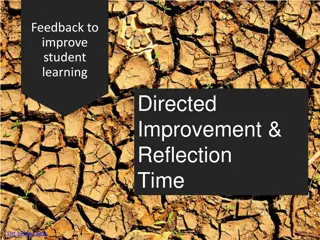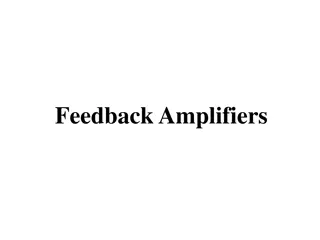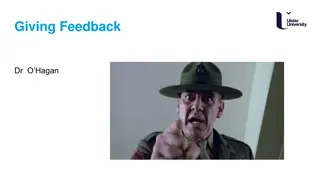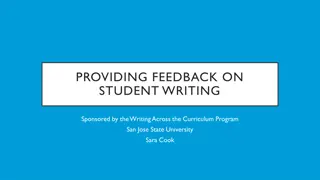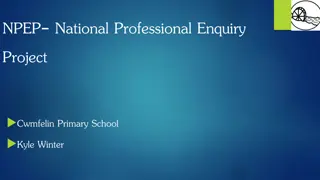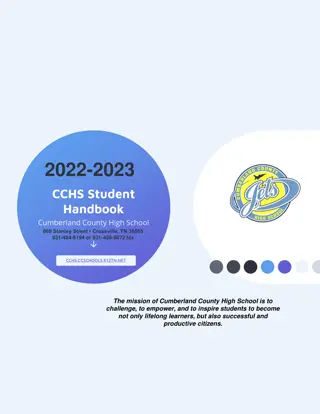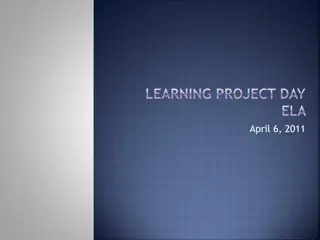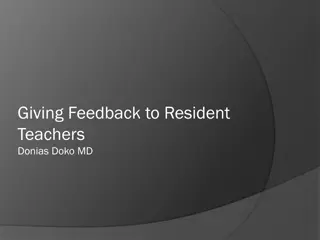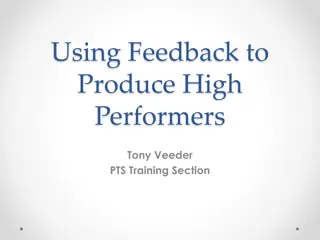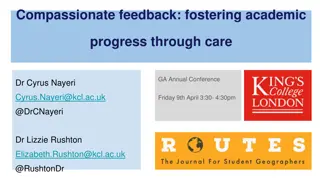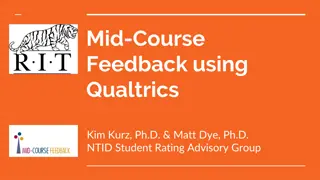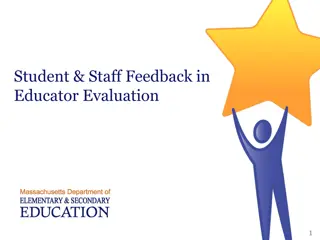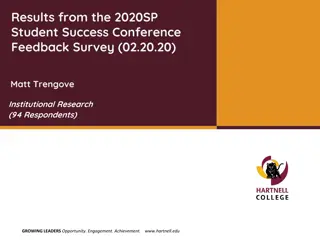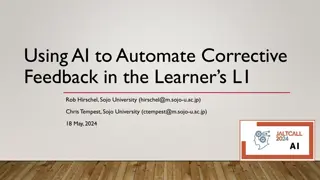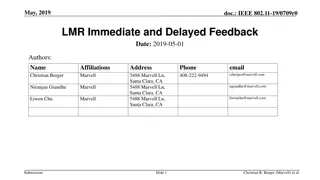Enhancing Student Feedback Strategies at Gladstone State High School ACER EPPC Conference
Exploring the importance of effective feedback in student learning, the presentation at Gladstone State High School details the moral imperative highlighted by Fullan. It addresses challenges such as lack of student representation, lagging writing results, and inconsistent strategies. The session also examines signs of ineffective feedback and emphasizes the characteristics of good feedback, along with the significance of writing in student development.
Download Presentation

Please find below an Image/Link to download the presentation.
The content on the website is provided AS IS for your information and personal use only. It may not be sold, licensed, or shared on other websites without obtaining consent from the author. Download presentation by click this link. If you encounter any issues during the download, it is possible that the publisher has removed the file from their server.
E N D
Presentation Transcript
Feedback enabling students at Gladstone State High School ACER EPPC Conference May 2015
What is the moral imperative (Fullan) Lack of representation in the U2B Lagging results in Writing worse than national trend Data is not trending it is cohort driven lack of strategy and consistency Even though extension classes exist, there is no triangulation in the U2B
Is there evidence of the following? Lines of kids outside staffrooms waiting to see teachers to get their rough copies back Students conferencing in classes but talking more about what they did on the weekend than the task at hand Students who say, I don t know what she means by Students who say, I have checked my rough copy, Miss. but you can tell by the end of the first line that they haven t Teachers who say, Read your work out aloud, as if that will solve all the problems.
When is feedback not feedback? When it s editing When it s a one way process When it doesn t make sense to the child When it doesn t provide a way forward
What is good feedback? Student centred Meaningful Focussed on student needs Able to be discussed in a conversation using meta language
What is the research telling us? Writing is important Writing has an impact on our ability to learn and to think at the highest levels across disciplines. Writing literally makes students smarter. (Shmoker, 2006, Results Now )
Why dont teachers engage in writing? Time away from content Too difficult to assess Too time consuming Students can t/ won t write (www.collinsed.com)
Why dont students engage in writing? Boys and underachievement, It s a boy heavy cohort. Disengagement Behaviour Fear of failure Fear of hidden criteria From Switch: how to change when change is hard 1.What looks like laziness is often exhaustion. (p.12) 2.What looks like resistance is often lack of clarity. (p.15) 3.Clarity dissolves resistance. (p.72) 4.Some is not a number; soon is not a time. (p.11) www.collinsed.com
Write more, Grade Less Anne Marie Hall 1994, pp 168-169 The research is strong that students are better off when we mark their work for fewer criteria that we have just finished teaching carefully and explicitly students need limited amounts of specific feedback and they need it quickly. Marzano and others have shown that we can be vastly more effective while spending only a fraction of the time we spend now on grading.
Writing at Gladstone State High School Must have substantive content Meets 3 Focussed Correction Areas which are clearly stated.
What are Focussed Correction Areas? Relate to : Content Sufficient, relevant detail Technical vocabulary used and spelled correctly Organisation Clearly stated thesis Beginning and ending that establishes purpose Convention Complete sentences Punctuation Style Beginning that captures interest Powerful verbs Collins.J 2007 The Collins Writing Program: Improving Student Performance
Students can apply criteria to their writing and use them to structure conferences with their peers
Glenmore State School NAPLAN Writing 426 Student 107 / 25% Indigenous 72 / 17% EAL/D 14 Cultures Represented 26 / 6% Kids in Care ICSEA: 877: 7th percentile 1st decile



